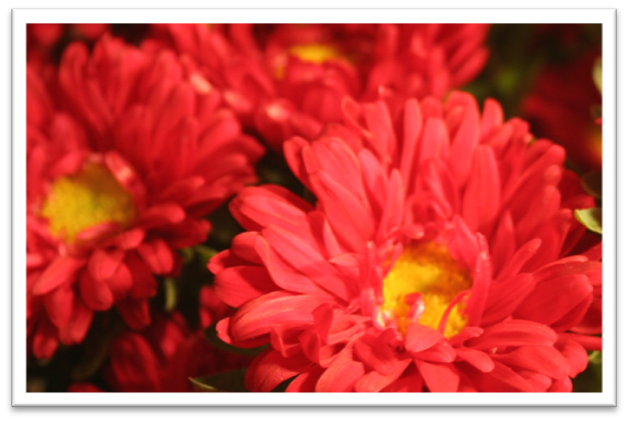This vibrant flower, also known as the Japanese Aster (Callistephus) has lengthy, sturdy stems paired with layers of long-lasting, soft flowers. And I mean soft. Rub-your-face-in-them-soft.
The history of this long-stemmed annual is noteworthy—it is native to the eastern regions of Asia, and the name Aster hails from the Latin word for “star,” while its scientific name, Callistephus, comes from the Greek word for “beautiful crown.” You can see why agronomists of old named it as they did—the flower’s snugly packed, thickly fringed petals that surrounds its rich, yellow center strongly resembles a star as well as a crown. It’s enough to make you want to fashion a star-flower tiara for yourself and parade through a field of blooms.
pink aster matsumotos
Typically, asters are a strict late summer/early fall variety, but with a carefully organized aster program, blooms are able to flourish year-round. They respond well to cool, coastal climates and are often grown in hoop houses, where they are protected by cold evenings, even during the colder months of winter.
Unlike bulb flowers, asters are grown from rooted seed, which requires no pre-cooling before planting. Even without that additional cooling cycle, the entire growing process from seedling to flower takes approximately 10-15 weeks to complete.
Purple matsumoto asters
Asters show full color when they’re ready to be picked, providing flower farmers with some great eye candy. Walking through seas of long-stemmed red, pink, purple, and bi-colored aster blooms is quite a treat.
Asters bring liveliness and vibrancy to any flower arrangement, but they also shine brightly on their own. Add them to large, mixed bouquets, or placing them in a tall vase on their own as a simple and happy floral piece.
Closeup of the red aster




